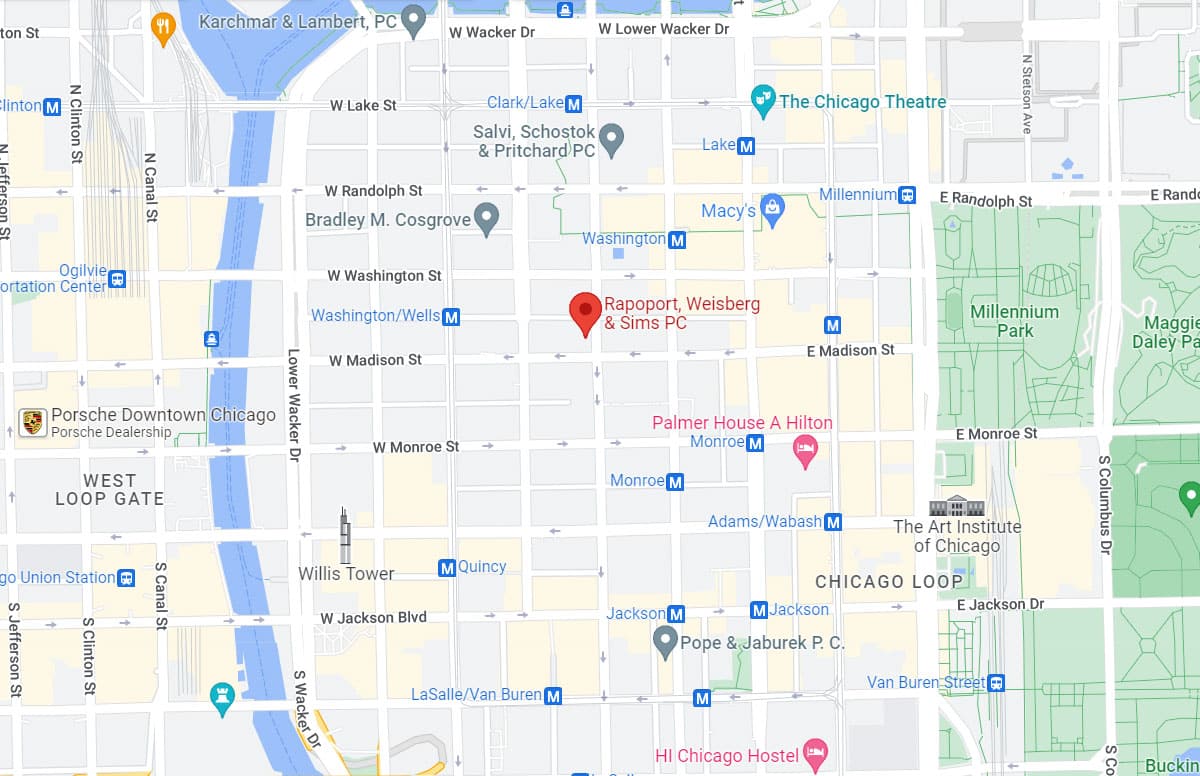Download this document as a PDF
A fundamental aspect of any personal injury or wrongful death action is
determining the elements of compensatory damages available and any
damages limitations that may exist. Under Illinois law, the basic elements of damages in a personal injury case include past and future medical expenses, past and future loss of earnings, past and future pain and suffering, past and future disability/loss of a normal life, and disfigurement. In certain cases, additional damages may be claimed such as caretaking
expenses, emotional distress, and shortened life expectancy. An injured plaintiff’s spouse may also maintain an action for loss of consortium and loss of services.
Illinois also allows damages for increased risk of future harm. This element of damages was recognized by the Supreme Court of Illinois in Dillon v. Evanston Hospital, 199 1II. 2d 483 (11 1. 2002), and it enables certain plaintiffs to recover where the likelihood of future harm occurring is less than 50%. These damages are calculated by reducing the total amount of damages to which plaintiff would be entitled if the harm actually occurs by the proven probability that the harm will in fact occur.
In wrongful death actions, there are three statures governing the available elements of damages: the Survival Act (755 lLC5 5/27 – 6), Wrongful Death Act (740 ILC5 180/1) and family Expense Statute (750 ILCS 65/15) . The Survival Act allows a decedent’s estate to recover damages sustained by the decedent prior to death. In practice, the most common element of survival damages sought is pain and suffering.
Meanwhile, the Wrongful Death Act allows a decedent’s surviving spouse and/or next of kin to recover for their “pecuniary injuries.” The term “pecuniary injuries” has been defined by the Supreme Court of Illinois. and generally includes loss of economic support, loss of services, and loss of society. Additionally, the Illinois legislature recently amended the Wrongful Death Act to expand the definition of pecuniary injuries to include “grief, sorrow, and mental suffering.” 740 lLC5 180/1. Damages may also be sought for medical and burial expenses
incurred by a surviving spouse or next of kin pursuant to the Family Expense Statute.
Regarding limitations on damages, there are no statutory caps on damages in Illinois.
While the Illinois legislature has enacted damages caps on several occasions, each time
they were found to be unconstitutional by the Supreme Court of Illinois. For instance, in
Best v. Taylor Machine Works, 179 1I1. 2d 367 (Ill. 1997), the Supreme Court struck down a cap on noneconomic damages as unconstitutional special legislation and in violation of the separation of powers doctrine. More recently, in Lebron v. Gottlieb Memorial Hospital, 237 1I1.2d 21 7 (III. 2010), the Supreme Court held a noneconomic damages cap in medical malpractice cases was unconstitutional.
While there are no damages caps, compensatory damages awarded by a Jury
may be reduced if they are found to be excessive. The Appellate Court of Illinois, First
District, recently summarized the standard for remitter as follows:
The amount of a verdict is generally at the discretion of the jury. A damage
award is nor subject to scientific computation. A question of damages is to be determined by the trier of fact, and “a reviewing court will not lightly substitute its opinion for the judgment
rendered in the trial court.” However. a court will order a remittitur, or, if the plaint if does not consent, a new trial, if a verdict is excessive. * * * [T]he supreme court [has] indicated that an
award may be viewed as excessive if it (1) exceeds the range of fair and reasonable compensation, (2) is the result of passion or prejudice, or (3) is so large that it shocks the judicial conscience. But remittitur will not be ordered when an award ” falls within the flexible range of conclusions which can reasonably be supported by the
facts.'”Colella v. JMS Trucking Co. ofIllinois, Inc., 403 Ill. App . 3d 82, 96 (Ill. App. Ct. 2010)(internal citations omitted).
Damages may also be barred or limited due to a plaintiff’s conduct. The law concerning
contributory negligence states a plaintiff is barred from recovering if his or her fault is
51% or more of the proximate cause of the damages for which recovery is sought. 735
ILC5 5/2-1116(c). Meanwhile, a plaintiff whose contributory negligence is 50% or less of the proximate cause of the damages for which recovery is sought shall have their damages reduced in proportion to the percentage of their contributory negligence. Id. Plaintiffs also have an independent duty to mitigate damages by exercising ordinary care to obtain medical treatment, and they may not recover damages proximately caused by their failure to exercise such care.
Finally, the law concerning joint and several liability is worth no ting. Defendants found
liable in actions arising out of medical negligence or environmental contamination are jointly and severally liable for all damages to which plaintiff is entitled . 735 ILCS 512-111 8. For all other personal injury and wrongful death actions, liable defendants are jointly and severally liable for plaintiff’s past and future medical expenses. 735 ILCS 512-11 17. Additionally, liable defendants are jointly and severally liable for all other damages to which plaintiff is entitled if their fault is 25% or greater of the total fault attributable to the plaintiff, the defendants sued by the plaintiff, and any third party defendant except the plaintiff’s employer. Id. In calculating the total fault for purposes of joint and several liability, good-faith settling defendants that have been dismissed from the lawsuit are not included. See Ready v.
United/Goedecke Services, l nc., 232 m.2d 36 9 (III. 2008).
Mr. Weisberg is a partner handling catastrophic personal injury and wrongful death
cases at Rapoport Law Offices.

